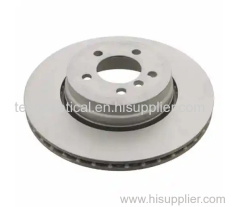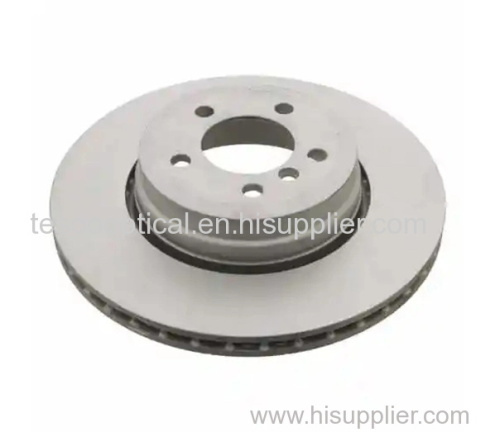A auto brake disc, also known as a auto brake rotor, is a circular component attached to a vehicle's wheel hub, providing you with the reliability and confidence you need on the road. When the brake pads clamp onto its surface, friction is generated, converting kinetic energy into heat to slow down or stop the vehicle. It plays a crucial role in modern disc brake systems.
Types of Custom Brake Discs
QBD001 Front Brake Disc
QBD002 Front Axle Brake Disc
QBD003 Front Axle Brake Disc
QBD004 Rear Axle Brake Disc
QBD005 Front Axle Brake Disc
QBD006 Front Axle Brake Disc
QBD007 Front Brake Disc
QBD008 Rear Brake Disc
QBD009 Front Brake Disc
QBD010 Front Brake Disc
QBD011 Rear Brake Disc
QBD012 Front Brake Disc
QBD013 Rear Brake Disc
QBD014 Front Brake Disc
QBD015 Front Brake Disc
QBD016 Front Brake Disc
QBD017 Front Brake Disc
QBD018 Rear Brake Disc
QBD019 Rear Brake Disc
QBD020 Front Brake Disc
Brake Disc Function
The auto brake disc china, also known as an auto brake rotor, plays a critical role in the braking system of a vehicle. Its main function is to provide a surface for the brake pads to grip onto and generate friction, which ultimately slows down or stops the rotation of the wheel.
When the brake pedal is pressed, hydraulic pressure is applied to the brake caliper, which in turn, causes the brake pads to clamp down on the brake disc quality. As the rotating disc is squeezed between the brake pads, friction is generated. This friction converts the kinetic energy of the rotating wheel into heat energy.
The disk brake rotor is designed to handle and dissipate this heat efficiently to prevent brake fade and maintain consistent braking performance. Brake discs are typically made of cast iron, as it has excellent heat absorption and dissipation properties. Some high-performance vehicles may use carbon-ceramic disc brake parts, which offer even better heat resistance and weight reduction.
By converting the kinetic energy into heat energy, the high-performance brake rotors and braking system slow down or stop the vehicle effectively. The brake disc's design, material quality, and proper maintenance are crucial to ensure its durability, effective friction, and overall braking system performance.
Brake Disc Material
Car brake discs, also known as rotors, are typically made from several different types of materials by auto brake manufacturers, each with its own characteristics and advantages. The most common materials used for custom-made brake discs include:
1. Cast Iron: Cast iron is the most widely used material for brake discs. It offers excellent heat absorption and dissipation properties, making it suitable for various driving conditions. Cast iron discs are relatively affordable and provide good overall braking performance.
2. Carbon Steel: Carbon steel discs are designed to be lightweight and have better heat resistance compared to standard cast iron discs. They offer improved performance under high-temperature conditions and reduce unsprung weight, enhancing overall vehicle handling.
3. Composite Materials: Composite brake discs combine different materials to offer superior heat resistance, weight reduction, and performance. One common composite material is carbon-ceramic, which consists of a carbon fiber matrix and ceramic particles. Carbon-ceramic discs are expensive but highly effective in extreme driving conditions, such as high-performance or racing vehicles. They provide excellent heat resistance, reduce brake fade, and have a longer lifespan compared to cast iron or carbon steel discs.
The choice of brake disc material depends on factors such as the type of vehicle, driving style, and intended use. Passenger cars and standard vehicles often use cast iron discs, while performance vehicles may opt for carbon steel or carbon ceramic discs to improve braking performance and reduce weight. It's essential to consider the specific requirements and recommendations of the vehicle manufacturer when selecting the appropriate brake disc material.
Auto Brake Disc Components
Rotor Surface:
The friction surface where auto brake pads make contact, generating friction to slow down the vehicle.
Ventilation Vanes:
Channels within the auto brake rotor that promote heat dissipation, preventing brake fade during heavy use.
Hub:
The central part of the custom made brake discs that connects to the wheel hub, enabling rotation.
Mounting Holes:
Holes around the hub for attaching the disk brake parts securely to the wheel hub.
Heat Sinks/Ribs:
Fins or ribs on the auto brake rotor's surface that aid in heat dispersion, preventing overheating and maintaining performance.
Flanges:
Raised edges on the auto brake rotor's perimeter that keep the brake pads centered and minimize lateral movement.
Coating/Finish:
Some disk brake rotors have coatings or finishes to protect against corrosion and enhance aesthetics.
Bobbins:
Pins or screws that secure the rotor to the hub and allow for some axial movement due to thermal expansion.
The Role of A Brake Disc in Auto Braking System
The auto brake disc is a pivotal component of the auto braking system, serving as the primary surface for friction generation. When the brake pedal is pressed, brake pads clamp onto the disc's friction surface, creating resistance and converting the vehicle's kinetic energy into heat energy. This frictional force decelerates the vehicle, allowing it to come to a controlled stop. The brake disc's design, material, and heat-dissipation features play a crucial role in preventing brake fade, ensuring consistent braking performance even under prolonged or heavy use. Its effective heat management, along with ventilation vanes and cooling channels, helps maintain optimal braking efficiency, contributing significantly to overall vehicle safety and stopping power.
Disc Brake Maintenance
Disc brake maintenance is crucial for ensuring optimal performance and safety. Regular maintenance helps to extend the lifespan of the brake components, prevent brake failure, and maintain consistent braking power. Here are some key aspects of disc brake maintenance:
1. Visual Inspection: Regularly inspect the auto brake discs, pads, and calipers for signs of wear, damage, or unevenness. Look for any cracks, deep grooves, or thinning brake pads. If you notice any abnormalities, it's important to address them promptly.
2. Brake Pad Replacement: Replace the brake pads when they become worn down to the minimum thickness recommended by the brake disc manufacturers. It's important to replace brake pads as a set for both front disk and rear wheels to maintain balance.
3. Rotor Resurfacing or Replacement: If the brake rotors are severely worn or damaged, resurfacing or replacement may be necessary. Resurfacing involves removing a thin layer of metal from the rotor's surface to eliminate any irregularities or grooves. However, if the disk brake rotors are excessively worn or deeply grooved, replacement is often recommended.
4. Brake Fluid Flush: Regularly flush and replace the brake fluid to remove any moisture, air bubbles, or contaminants that may affect the brake system's performance. Consult the vehicle's owner manual for the recommended intervals for brake fluid replacement.
5. Lubrication and Adjustments: Ensure that all moving auto brake parts, such as caliper slides and pins, move smoothly and are properly lubricated. Any excessive friction or sticking can impact brake performance. Additionally, check and adjust the brake pedal feel and handbrake/parking brake tension as needed.
6. Professional Inspection: It's advisable to have a professional mechanic inspect and service the disc brakes if you're unsure about performing the maintenance yourself or if you suspect any issues. An expert from an OEM china brake disc factory can provide a thorough assessment and perform necessary repairs or adjustments.
Remember, proper maintenance and prompt attention to any brake issues are crucial for your safety and the well-being of your vehicle. Regular inspections and servicing provided by brake rotor manufacturers will help ensure optimal braking performance and extend the longevity of your rear disc brakes.
Disc Brake Working Principle
The disc brake system operates on the principle of friction. When the brake pedal is pressed, hydraulic pressure is generated, which forces brake fluid into the caliper. This pressure causes the caliper to squeeze the brake pads against the rotating brake disc (rotor). The friction created by the brake pads pressing against the disc slows down or stops the rotation of the wheel. The heat generated by this friction is dissipated through the auto brake rotor, preventing the brakes from overheating. This friction-based mechanism allows for efficient and reliable braking performance.






